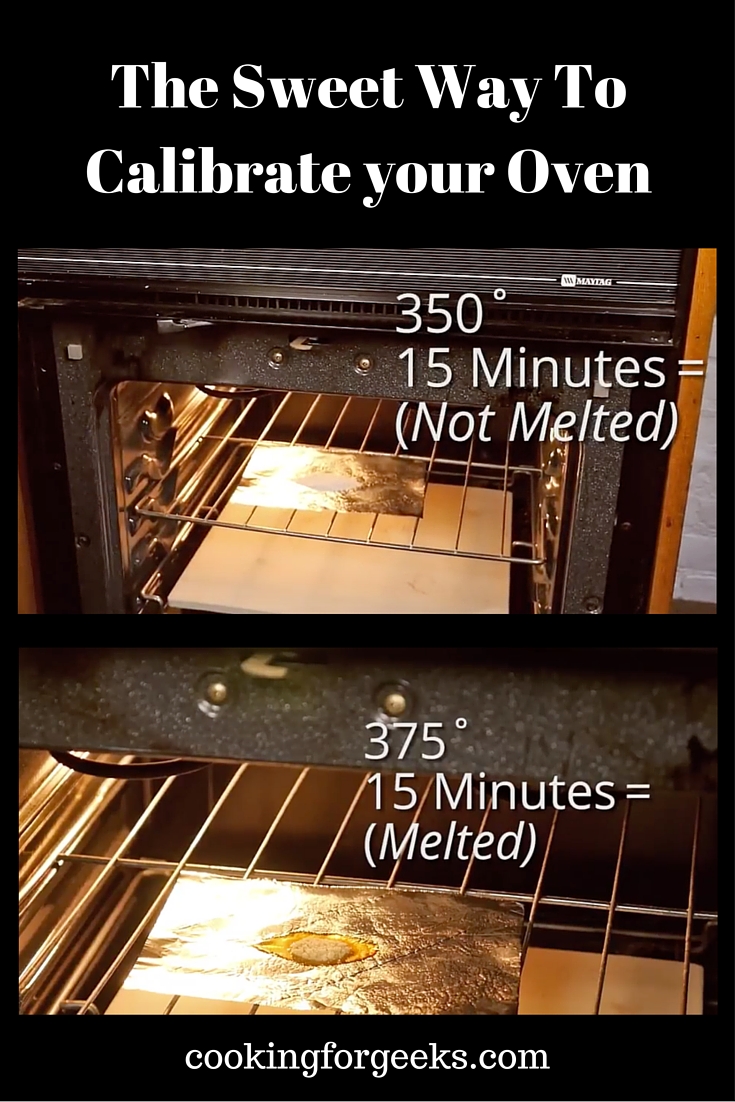What if you don’t have a digital thermometer and need to check an oven? It’s common practice to calibrate thermometers with ice water and boiling water because those have temperatures based on the physical properties of water. Water isn’t the only chemical in the kitchen with known temperature dependent properties, though: you can also calibrate your oven’s thermometer using sugar!
Mankind has been harvesting sugar for millennia, but only in the past few hundred years have we industrialized it. The sugar you buy most likely comes from either the sugarcane or sugar beet plant, which is soaked in hot water to dissolve out its sugar into a syrup that’s then crystallized. The white table sugar that you’re familiar with is ~99% sucrose—a pure substance (C12H22O11)—with the rest being water and a tiny percentage of stuff like trace minerals and ash that come along for the ride.
First, grab these supplies:
• Aluminum foil
• Sugar
• A timer
• A plate (for hot sugar samples)
• And, obviously, an oven!
Here’s what to do:
The sucrose in table sugar melts at 367°F / 186°C. It turns from the familiar white granulated substance to something resembling glass. (Sucrose undergoes a chemical breakdown at low temperatures; see page 221.) A properly calibrated oven won’t melt sugar when set to 350°F / 180°C but it will when set to 375°F / 190°C.
We’re going to bake two different samples of sugar at two different temperatures, one hopefully below and the other above sugar’s melting point, to check your oven’s temperature.
1.
Preheat your oven to 350°F / 180°C.
2.
Make two aluminum foil “sample containers”:
a)
Tear the aluminum foil into 5” × 5” (12 cm × 12 cm) squares.
b)
Fold the edges of each piece up, making a miniature pan that’s about 4” / 10 cm square and ½”/ 1 cm high.
3.
Add a spoonful of sugar into each sample container.
4.
Put the first sample container in the preheated oven (350°F / 180°C). Set a timer for 20 minutes and wait.
5.
After 20 minutes, remove the first sample and transfer it to your plate. Remember, the sugar is hot, even if it doesn’t look it!
6.
Set your oven to 375°F / 190°C and wait 10 minutes for it to adjust.
7.
Put the second sample container in the oven. Set a timer for 20 minutes and wait.
8.
After 20 minutes, remove the second sample and transfer it to your plate.
Investigation time!
What differences do you see between the two samples? Why do you think that happened? Compare the 350°F / 177°C sample with some uncooked sugar; what do you notice? Why might that be happening? And the best part of the investigation: once the samples have cooled down, taste them! What does the 375°F / 190°C sample remind you of?
Sugar at 350°F / 177°C. Sugar at 375°F / 190°C.
Check back soon for my next post:
How To Cook A High Heat Pizza
